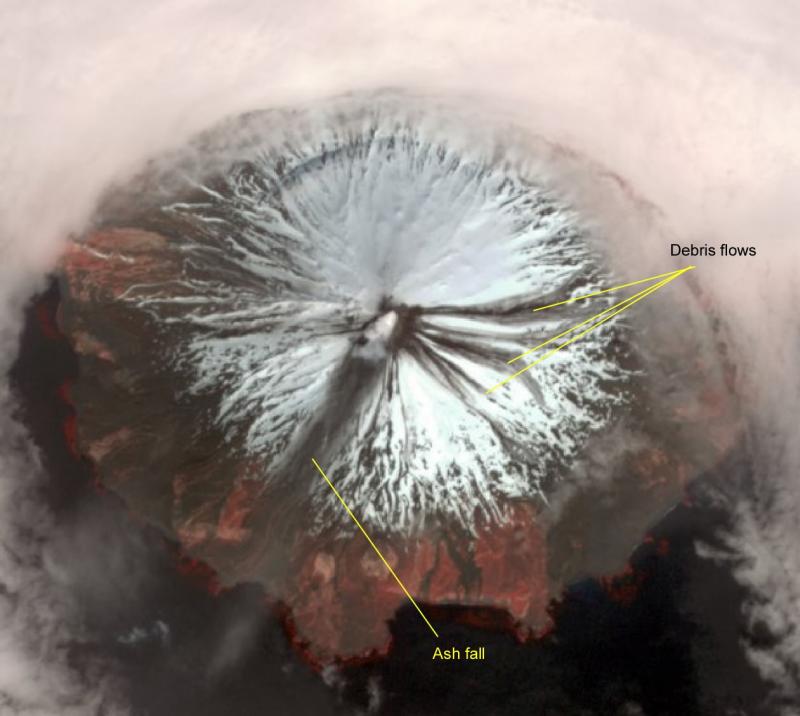
Cropped ASTER visible/near infrared 15m image showing recent debris flow and ash fall deposits on Cleveland Volcano. The image The image also shows light steaming from the summit crater. A small ash emission from Cleveland Volcano was observed in other satellite data on May 30, 2010 at 7:56PM AKDT.
Volcano(es): Cleveland
Photographer: Wessels, Rick
URL: avo.alaska.edu/image/view/19861
Credit: Image courtesy of AVO/USGS. Image data courtesy of NASA/GSFC/METI/ERSDAC/JAROS, and U.S./Japan ASTER Science Team
Use Restriction: Please cite the photographer and the Alaska Volcano Observatory / U.S. Geological Survey when using this image.
Full Resolution.
Cleveland 2010/5
From Neal and others (2014): "A sudden and sustained increase in surface temperature in May prompted AVO to upgrade the Aviation Color Code and Volcano Alert Level from UNASSIGNED to YELLOW/ADVISORY on May 25 [2010]. After consistent thermal anomalies during the last week of May, AVO remote sensors detected a small ash plume on satellite imagery on May 30. The plume was traveling at an estimated altitude of 16,000 ft ASL and drifting south.
ASTER acquired a mostly clear view of Cleveland on June 1. Recent dark flowage deposits are visible on the eastern flank and tephra-fall deposits blanket a swath to the southwestern coastline. The summit crater was hidden by a white vapor cloud.
Following the impulsive ash event on May 30, AVO ceased to detect consistently elevated surface temperatures and, without additional observations of activity, AVO returned the volcano to UNASSIGNED on June 11.